

Yin and Yang in Chinese Cooking. Yin and yang.
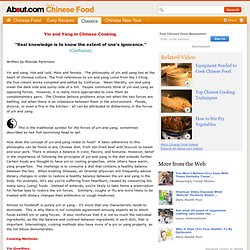
Hot and cold. Male and female. The philosophy of yin and yang lies at the heart of Chinese culture. The first references to yin and yang come from the I Ching, the five classic works compiled and edited by Confucius. Taken literally, yin and yang mean the dark side and sunny side of a hill. This is the traditional symbol for the forces of yin and yang, sometimes described as two fish swimming head to tail. How does the concept of yin and yang relate to food? Almost no foodstuff is purely yin or yang - it's more that one characteristic tends to dominate. Cooking Methods: Yin Qualities: Boiling Poaching Steaming Yang Qualities: Deep-frying Roasting Stir-frying Types of Foods: Yin and Yang Image reprinted from the site of Mary Shomon, About's Guide to Thyroid Disease Previous Features.
Raw Food Diet Conversion Chart. You are interested in a raw food diet.
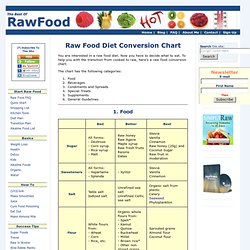
Now you have to decide what to eat. To help you with the transition from cooked to raw, here's a raw food conversion chart. The chart has the following categories: FoodBeveragesCondiments and SpreadsSpecial TreatsSupplementsGeneral Guidelines 1. 2. 7 Keys to a balanced vegan diet in line with Chinese medicine philosophy - Deepest Health. In my years interacting with the Chinese medicine community, only one thing has really irritated me about it.

You may guess by the title that it has something to do with veganism. Many professors and students I have interacted with have claimed that being vegan is not healthy, not balanced, or otherwise out of step with Chinese medical philosophy. One student went so far as to claim that I would absolutely not be able to maintain a vegan diet as I progressed through the program!
I have not found this to be the case, and in fact, my appreciation for veganism has simply grown the more I’ve learned about the human body and Chinese medicine principles. Before continuing, I want to make clear that I am not a militant vegan – I do not interfere in the personal business of others. 1. Here’s a partial list of my favorite warm foods: mustard greens, members of the onion family (garlic, onion, chive), parsnips, winter squash, cherries, oyster mushrooms and chestnuts! 2. 3. Fluoride Health Effects Database. Yin-Yang Balance and Food Choice. Whether you turn to acupuncture or allopathic medicine for healing, choosing the right foods for your constitution will speed your progress.
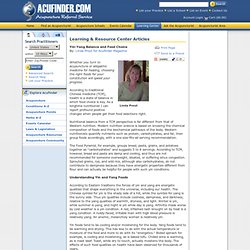
According to traditional Chinese medicine (TCM), health is a state of balance in which food choice is key. As a longtime nutritionist I can report profound positive changes when people get their food selections right. Nutritional balance from a TCM perspective is far different from that of Western nutrition. Modern nutrition science is based on knowing the chemical composition of foods and the biochemical pathways of the body. Properties of Food from a TCM Perspective.
Chinese Medicine. Now for a more in depth look at the energetic and medicinal properties of food in TCM: ALCOHOL, THE NATURE OF According to the Alcohol and Health website, "In TCM alcohol is characterized as sweet-bitter and hot, toxic.
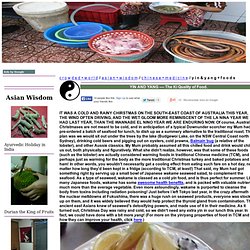
If drunk in small amounts it stimulates blood circulation, reduces haematomae, vitalizes blood, drives out "wind" and dispels "cold" symptoms, transports medicaments and disperses bad influences. In the clinical approach alcohol is often used to cure "wind", "cold" and pain, neuralgia, cold and painful chest and belly. " Discussing the medical uses of alcohol, the site goes on to say: "Alcohol can not only be used as medicine, bur also to prolong life. Traditional Chinese Medicine - Dietary Principles - Dampness, Foods to Tonify Yang / Yin - Comox Valley Acupuncture. In Traditional Chinese medicine proper diet is an important component of health.

All foods are categorized into temperature, from hot to cold and flavour, pungent, spicy, sweet, sour and salty. Different temperatures and flavours of food influence the body in specific ways. One should try to include all flavours and a balance of temperatures in every meal. If too much of one type of food is consumed it can create an imbalance with in the body. Traditional Chinese medicine believes how we eat our food is also very important. It is important to Sit down to eat Chew food well Pay attention to eating, turn off the television, get away from the work desk Eat organically and locally Eat seasonally Do not skip meals Traditional Chinese medicine views the stomach and spleen as a cooking pot that breaks down the food that is eaten and turns it into energy and blood for the body. Dampness Some symptoms of in the body are fatigue, body heaviness, sluggishness.
The FOOD Files: Chinese Diet. As of July 1, 2013 ThinkQuest has been discontinued.
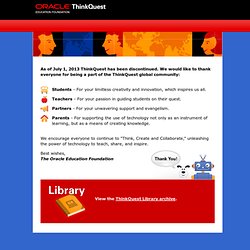
We would like to thank everyone for being a part of the ThinkQuest global community: Students - For your limitless creativity and innovation, which inspires us all. Teachers - For your passion in guiding students on their quest. Partners - For your unwavering support and evangelism. Parents - For supporting the use of technology not only as an instrument of learning, but as a means of creating knowledge.